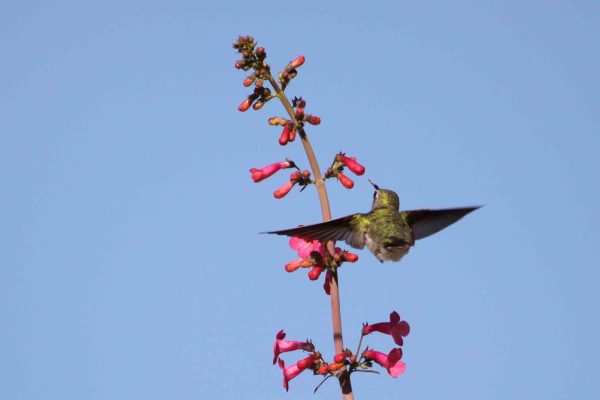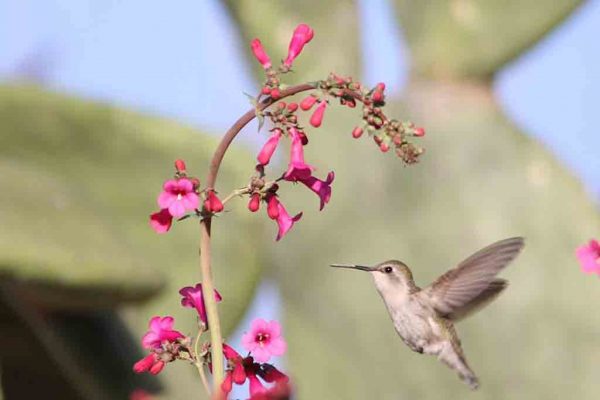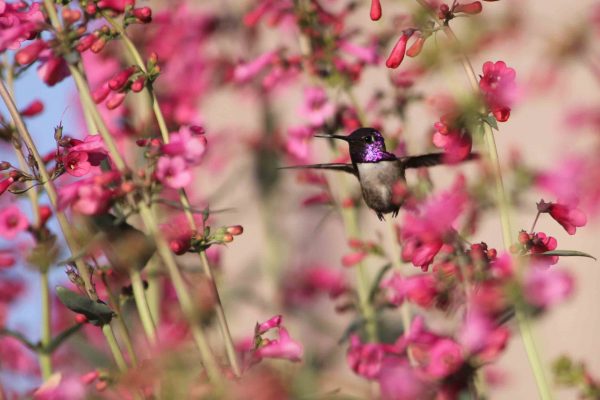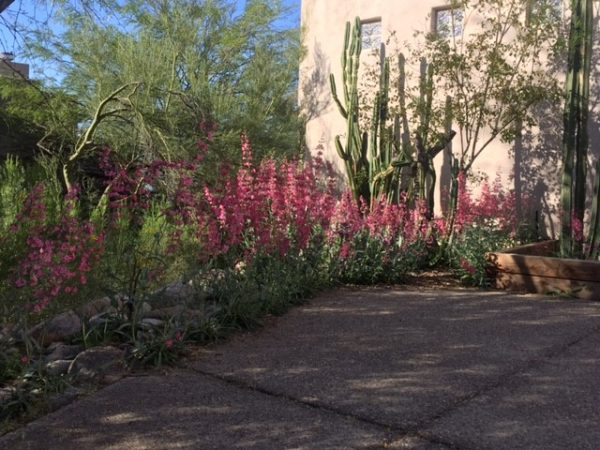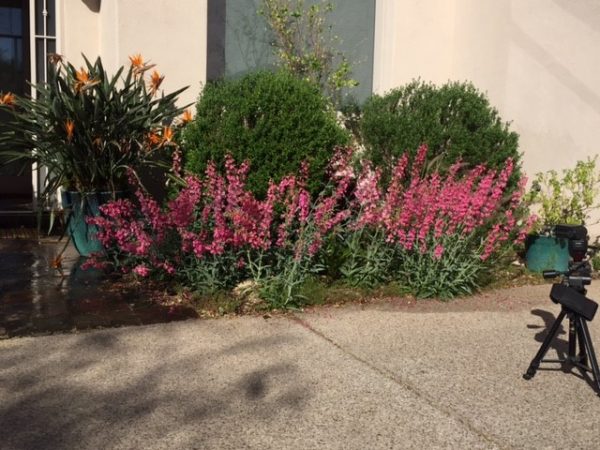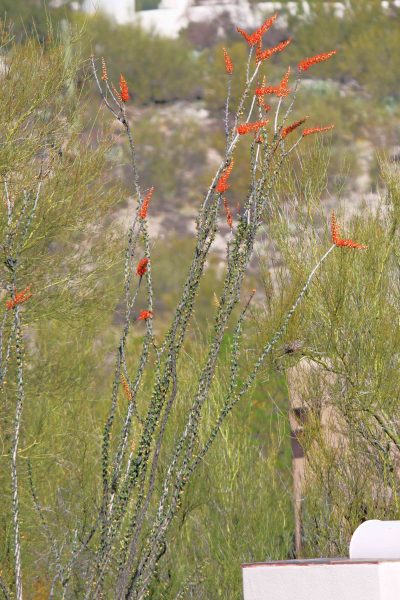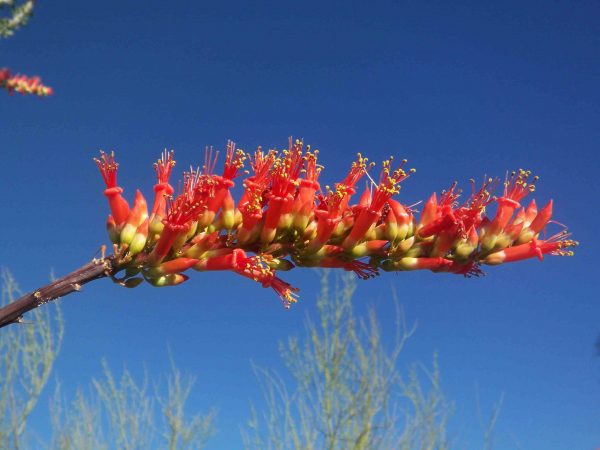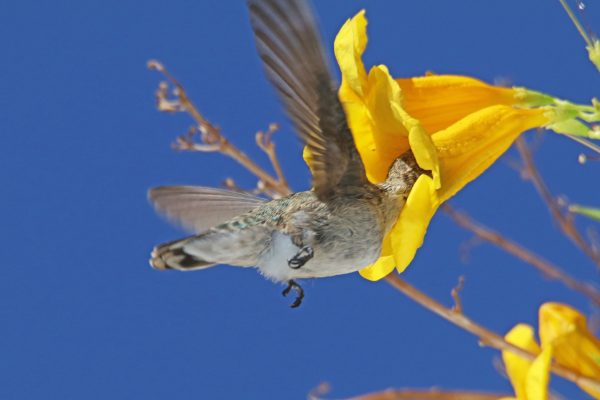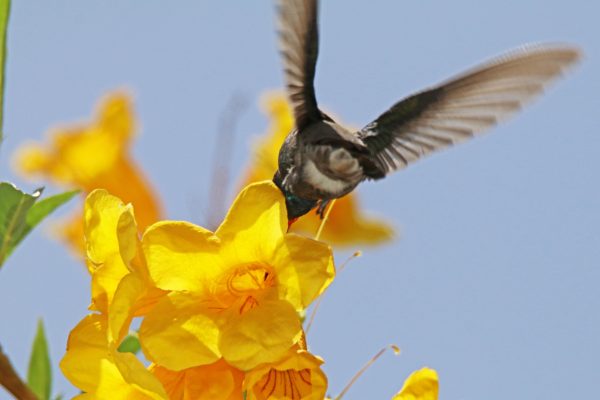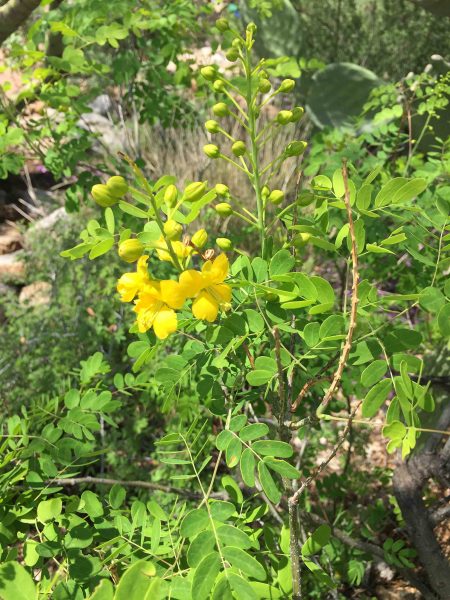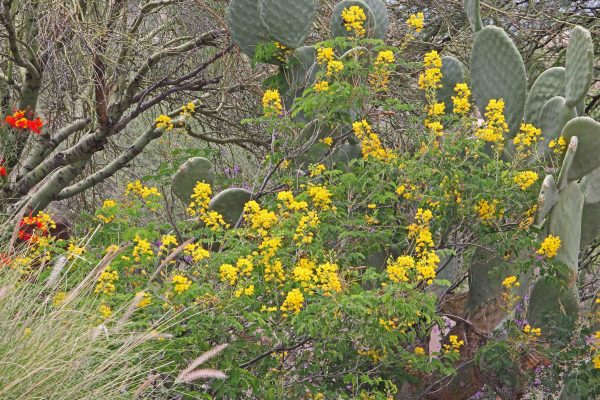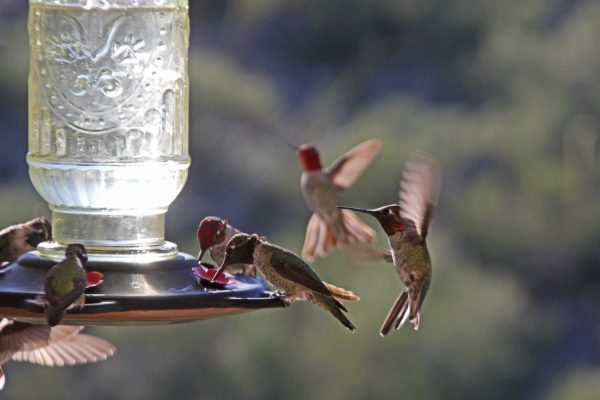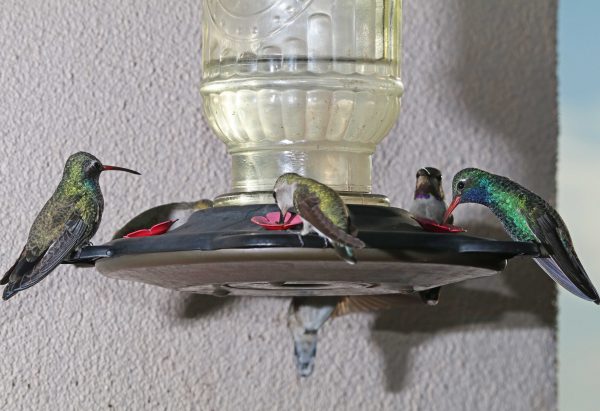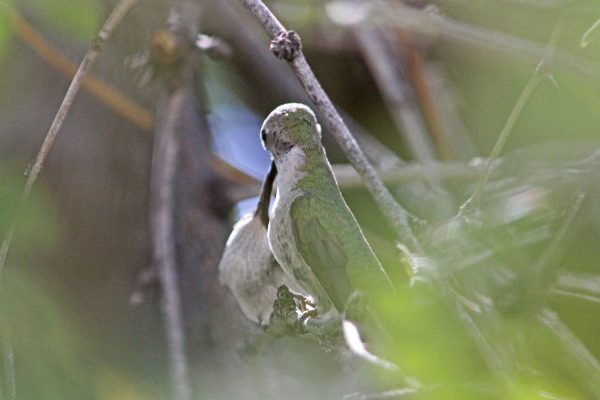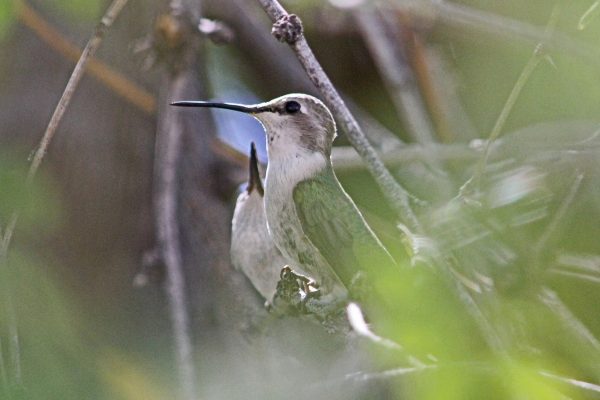Welcome to TucsonHummingbirds.com!
My wife, Jenann, and I are glad you have taken the time to check out our site and hope you enjoy the images I have captured over the years. I want to be very clear that the purpose of this site is to celebrate the beauty of the hummingbirds native to Tucson. Well, actually, I should also admit right up front that the site is really meant to celebrate the beauty of the hummingbirds that hang out in our yard/garden. I have made no effort to capture images of all the species that can be found in Tucson – if they don’t come to me, they don’t get photographed by me – and I am making little effort to offer ornithological input. For those of you wanting to study the hummingbirds native to Tucson, I encourage you to go to the following sites:
- The National Audubon Society
- The Tucson Audubon Society
- The Cornell Lab of Ornithology
- The University of Arizona Tucson Hummingbird Project
I will offer a few words about my background and how I came to focus on hummingbird photography. I moved to Tucson in 1986, and practiced full-time as a periodontist through the end of February, 2024. Having moved here from Iowa, where only one species of hummingbird is found – the Ruby-throated – I have always appreciated the diversity of our local hummingbirds. I have also kept hummingbird feeders up at home and at work (several of the treatment rooms in my office have large windows looking out on a fenced-in garden filled with bamboo) for basically all of these years.
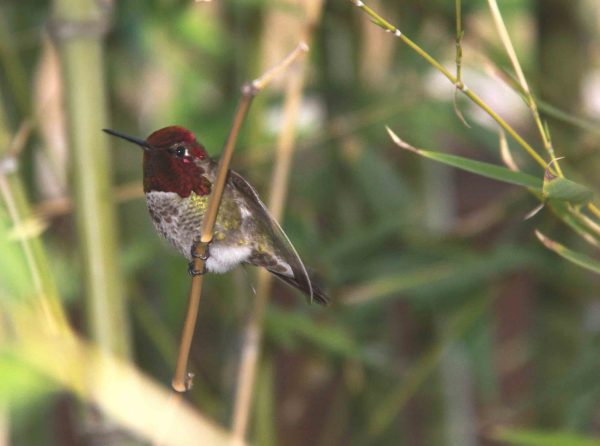
My first high-quality hummingbird image happened almost by accident, at my office. A male Anna’s Hummingbird was perched in the bamboo just outside the door leading outside (from “Lara’s Room” 🙂 ) on 2/9/10, and I carefully opened the door and took the picture with my 100mm macro lens and ring flash that I use for photos of teeth.
I have to admit that I was all of shocked and surprised and pleased and motivated by the beauty of the image once I viewed it on my computer. Wow! These local hummingbirds are even more beautiful and photogenic than I had realized. And I knew I wanted more, even though I also knew that capturing high-quality images of hummingbirds in flight was going to be challenging. Fortunately, in retrospect, the beauty of blooming penstemons and the fact that the penstemon flowers are irresistible to hummingbirds had also “always” captivated me, so I water my penstemon year-round to keep them thriving. In Tucson, penstemons bloom basically for the month of March (last weekend of February to the first week or two of April), so I had penstemons getting ready to bloom at the same moment in time that I captured the image of the male Anna’s perched in the bamboo.
I managed to get three “good” images at home during that spring blooming season in 2010. Two were of a female (or females), while one, excitingly, was of a male Costa’s Hummingbird. Even though I had kept hummingbird feeders up and enjoyed watching the hummers visit, I hadn’t taken the time to determine exactly which species were present at our feeders and in our garden. In retrospect, I guess I was assuming that the hummers were Anna’s, so the flash or purple got my attention.
The Equipment and the Camera Settings
In 2010, my “longest” lens was a 35mm – 200mm zoom. I went to work, trying to figure out the best camera settings to capture the hummingbirds in flight, feeding in the blooming penstemons. I also started paying attention to the species that were present in my garden at home. I started at 1/800 sec shutter speed, and quickly moved to 1/1000 sec, then 1/1250 sec. For the last couple of years, I have been shooting at 1/1600 sec when Broad-billed Hummingbirds are the principal focus of the photo-shoot, and 1/2000 sec when I am shooting mainly Costa’s, as it seems that the Costa’s have slightly higher wing speeds. Even then the wings are blurred in mid-stroke, including during one session in which I inadvertently set the shutter speed at 1/5000 sec. I have chosen the faster and faster shutter speeds to “freeze” the wings through a greater range of the wing positions. As might make sense, there seems to be a very brief “pause” during which the wings slow down as they transition from all the way back – or forward – into the next stroke, and the faster the shutter speed, the farther from the start/stop points the wings can be and still be moving slowly enough to get a minimally motion-blurred image.
Initially, I used fully manual settings, and it was a frustrating mess of improperly-exposed images. On our usual VERY BRIGHT Tucson days, shooting at 1/1250 or 1/1600 sec and at an F-stop of 6.3 or 7.1 would provide a favorable exposure at an ISO of 320 or 400. However, if the sun went behind the occasional cloud, or if the hummer moved into a shaded area, the exposure could be off by an F-stop or two. I struggled for a couple of years before just deciding to let the ISO “float” by putting it on auto. My “average” setting over the last couple of years has been the 1/1600 – 1/2000 sec shutter speed, as I have already mentioned, with the F-stop generally set somewhere between 8.0 and 13. I accept higher ISOs at the higher F-stops in order to increase the depth of field, depending upon the flowers and hummingbirds being photographed.
Having gotten the positive reinforcement of a few (“very few”) good images in the spring of 2010, I decided I needed a longer lens, and purchased a Tamron 200-500mm zoom. Unfortunately, the combination of this lens and the Canon 50D and 60D camera bodies I used from 2010 – 2016 did not allow me to get predictably crisp images when set on auto-focus. So all of my hummingbird images through the middle of March in 2016 were focused manually. It was…challenging. The only factor working in my favor is that the hummingbirds tend to move up and down individual stalks of flowers when feeding in penstemon, and any single stalk would be more-or-less in the same plane of focus. And, even so, they are moving quickly, and having them change from side flowers to front or back flowers on a blooming stalk of penstemon definitely changes the focal plane.
In March of 2016, I “re-invested” in my hummingbird photographic hardware, purchasing a Canon 80D and a new Tamron 150-600mm telephoto. The combination has changed my photographic life, as the improved auto-focus properties of the new Canon body, coupled with the faster, smoother auto-focus functionality of the lens has allowed me to shift to auto-focus photography for the fast-moving hummers, even though the foreground-background is frequently challenging. That is, the auto-focus can get confused and put the wrong plane in focus. Even so, the proportion of crisply focused images is definitely higher now than when I was focusing manually. In the fall of 2018, Jenann purchased a Canon 5D (Mark IV) camera body with a full-frame sensor as a very thoughtful anniversary present, so images with dates after 10/10/18 will have been taken with the new camera body which should allow better resolution.
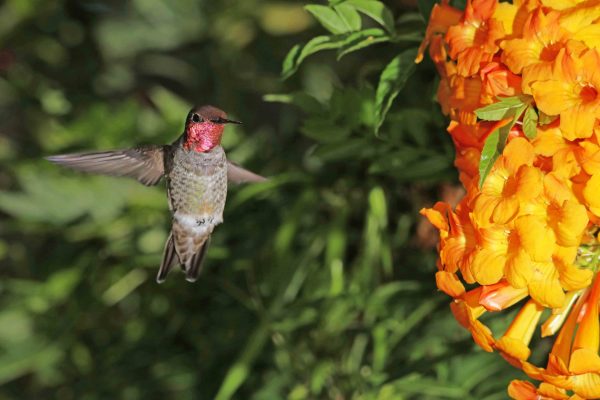
In the summer of 2016 I started experimenting with remote hi-speed synchronized strobes in order to provide improved illumination in situations with compromised ambient light, such as shaded spots and/or cloudy days. I started with a Canon 600EX-RT and then added a Canon 600EX II-RT, using optical transmission (I had an old 550EX that I used as the master). In my first outing – I was attending a dental meeting at Torrey Pines – I received immediate positive feedback for the effort, capturing a nice image of a male Anna’s in lighting that would have been too low without the strobes. In the ensuing years I have added several Godox strobes and a Godox wifi remote.
Another benefit of remote strobes is that the supplemental light is coming “from the right direction” in terms of lighting up the prismatic feathers and showing off their colors. During the winter, when the sun is low, I generally use supplemental strobe illumination only when I want to increase illumination and/or the depth of field. During the summer, though, with the extremely bright sunshine overhead trying to burn out the images, I sometimes use low-angle supplemental strobe illumination, thereby improving image quality. And the fact of the matter is that I prefer images captured with natural light, so after “getting the hang of” the hi-speed synched strobes I have pretty much stopped using them. Very few of the images captured and posted to this website since 2020 – think COVID – included supplemental illumination.
Jenann likens my hummingbird photography to fishing: long periods of quiet solitude – sometimes an hour or two between visits to the flowers I am set up to photograph the hummingbirds in – punctuated by intermittent episodes of frantic activity. Like fishing and landing an unexpectedly awesome fish, the occasional really good image keeps me coming back.
The Flowers and the Feeders
We have many different flowering plants in our garden, five of which are sufficiently attractive to hummingbirds to spend time sitting with camera in hand: penstemon (Penstemon parryi); ocotillo (Fouquieria splendens); salvia (Salvia greggii); yellow bells shrub (Tecoma stans); and Mexican bird of paradise (Caesalpinia mexicana). We also have a two large containers of true bird of paradise plants just outside our front door (Strelitzia reginae, which also happens to be the flower I used for my office logo); and a number of red bird of paradise plants (Caesalpinia pulcherrima) that hummers visit, just not often enough to warrant setting up for photos. We have added a Baja fairy duster (Calliander californica) in 2017, and I have managed to get a few good images of hummingbirds visiting these pretty, delicate flowers.
As mentioned previously, I have basically always found penstemon plants beautiful when they bloom in March, and have enjoyed watching hummingbirds feed in the blooming stalks of penstemon even before I started photographing the hummers. Growing penstemon in Tucson is a labor of love, particularly since I let them propagate by seed and have never been able to figure out a way to water them using drip irrigation. There are many penstemon plants growing along our driveway and across the front of our home, and keeping them alive in May and June means watering them at least every other day. And, hummers find them irresistible so all the watering is worth it for five or six glorious weekends.
Most of the year, ocotillos look like a bunch of dead sticks jutting up from the ground, sprouting leaves only after a good rain (and each sprouting of leaves might last only a week or two). While the penstemon are blooming for the 5 or 6 weekends at the end of February to early April, our ocotillos also tend to be in bloom, with or without leaves on the branches. And, hummingbirds also find the clusters of orange-red ocotillo flowers irresistible. Similar to when they are in the penstemon, when hummers are feeding in ocotillo they tend to work from one end of a flower cluster to the other, staying more-or-less in the same focal plane. Ocotillos are common in Tucson and the Sonoran desert, and provide an extremely important source of nectar for hummingbirds that are migrating north out of Mexico in March and April. We have one ocotillo in our front garden (pictured) and there are several in the wash behind our house. The front garden ocotillo has great light in the morning, while I generally have to trek down into the wash to get good light in the afternoon. The ocotillo and the penstemon are the most reliable attractors for our hummingbirds, and most of my early images are of the hummingbirds in one or the other.
One area of our garden has red salvia that blooms during the rainy monsoon season of our Sonoran Desert summer, and intermittently at other times. Even though the hummingbirds seem less enthusiastic about the salvia than they do about the penstemon and ocotillo, they do show up often enough to warrant sitting nearby with my camera in hand. The bright red flowers provide a different, appealing look when the hummingbirds do visit. The principal limitation is that the area is so small generally one hummingbird will claim it and keep others out, although the dominant individual can change from day to day.
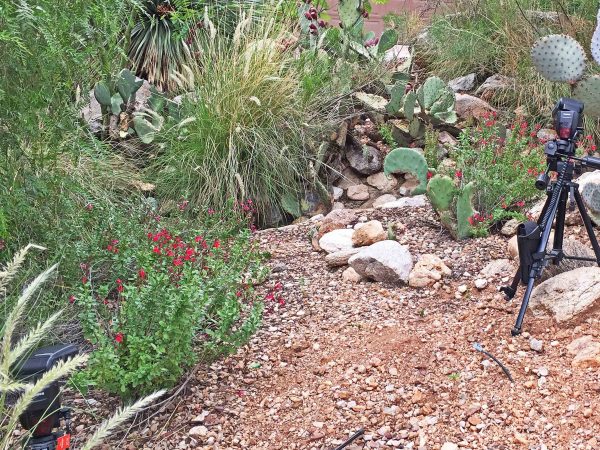
Our yellow bells shrub, which we have pruned as a small tree, is at the front of our house. Interestingly, the tubular yellow flowers are long enough that the hummers frequently exhibit “nectar robbing” behavior – accessing the nectar without simultaneously pollinating the flower – when feeding in the yellow bells. The two photos of hummers shown here document, first, why nectar robbing might be a good plan for feeding in flowers of this size, and, second, how a hummingbird goes through the base of the flower to access the nectar (including, looking closely at the second photo, being able to see the tip of the hummer’s bill inside the base of the flower).
We also have a few large Mexican bird of paradise shrubs that are worthwhile targets for hummingbird photography, although the two largest plants at the bottom of our driveway are intertwined with a mesquite tree. They flower off and on over the entire spring and summer, and tend to overlap nicely with the salvia (so I will shift from plant to plant over the course of the day, depending upon which one has the best light).
Jenann and I also have added several aloe plants over the years. Even though aloes are native to Africa and the Middle East, and therefor did NOT co-evolve with hummingbirds, the shape and color of the flowers attract hummingbirds, and having the aloes has dramatically increased my photographic hummers-in-flowers calendar.
We also have several Christmas Cactus plants. Interestingly, Christmas cactuses are native to the coastal mountains of southeastern Brazil, and DID co-evolve with hummingbirds. One key consideration making the Christmas Cactus plants ideal for hummingbird photography is that they are in pots, so I can position the flowers to optimize illumination. Putting the low winter sun at my back predictably illuminates the colorful head/throat feathers and produces a nice sun eye-shine. This is also true for some of our smaller aloes in pots.
Tucson is warm enough for the hummingbirds to stay put over the winter as long as hummingbird feeders are continuously available. I keep five feeders out on the back side of our house and a triple feeder in front. The hummers are quite territorial about access to the feeders during the breeding and nesting season, although their territorialism seems to subside as summer turns into fall, and Sep-Dec it is common to find multiple species and several males of the same species visiting the feeder at the same time (pasting a couple of examples, below). This does not generally happen Jan-Apr.
When setting up for the hummingbird photo-shoots, the “sweet spot” is 10-12 feet away from the flowers (the minimal focal distance for the Tamron 150-600mm lens is about 8ft). At 10-12 feet, the subject – bird and flower combo – will basically fill the viewfinder. At 8 feet, I have to zoom out a bit to avoid losing portions of the wings or tail. The distance to subject is an important set-up issue for the penstemon, Mexican bird of paradise, and salvia images, while the ocotillos are tall enough that it would be rare to be less than 10 feet away. Somewhat serendipitously I have discovered that it is nice to have variable backgrounds, including out-of-focus tufts of grasses and a granite boulder along our driveway (check out the images in the “Costa’s” gallery), as well as green Texas Ranger plants as backgrounds for the penstemon in front of our dining room window. The ocotillo photos generally have nice blue backgrounds, as I am shooting up into our sunny Tucson skies.
The Hummingbirds
We are fortunate to have three different species of hummingbirds at our feeders and in our flowers year-round: Anna’s (Callypte anna), Broad-billed (Cynanthus latirostris), and Costa’s (Calyptae costae). I occasionally see Rufous and Blue-throated hummingbirds as they migrate through. Rufous and Magnificent hummingbirds are summer residents on nearby Mount Lemmon, although I have not seen any Magnificents at my feeders. Black-chinned Hummingbirds are relatively common in Tucson, although our three resident species keep them away from our feeders and flowers. There are several other species of hummingbirds in the area that I have not seen or photographed.
Anna’s males are easily identified in good light, with bright red crown (head) and gorget (throat). Their gorget feathers are long, although not as long as the Costa’s. From a distance, in unfavorable lighting leaving their crown and gorget “dark” rather than red, it is difficult to distinguish the Anna’s from the Costa’s. Female Anna’s tend to have a sprinkling of red feathers on their throats, which is one reliable means of differentiating them from female Costa’s, along with the Anna’s females being larger and having slightly darker chest, abdomens, and flanks. Even though Anna’s males and females are at our feeders year-round, they are uncommon visitors to the flowers in our garden, with the assumption being that the Broad-billed and Costa’s keep them out. As a consequence, I have fewer high-quality images of Anna’s than I do of the other two resident species.
Broad-billed males are unmistakable. Very dark green backs, with bright blue gorgets and bright green chests/abdomens, along with a distinctive red-orange bill that has a black tip. They are absolutely beautiful photographic subjects, and I picked the right location to take up hummingbird photography. Tucson is about as far north as they range – it is my understanding that they are rare even in nearby Phoenix – and they are happy to stick around though the winter as long as I keep the feeders clean and full. In flight, their tails adopt a swallow-like “V” shape, making them easy to identify from a distance even if their colors are not obvious. Female Broad-billed Hummingbirds are relatively easy to identify – especially after the fact in photographic images – as the underside of their bills will have some of the characteristic red-orange coloring.
Costa’s males are also easily identified in good light, with their bright purple crowns and (extremely long) gorget feathers. They also are smaller than the Anna’s, although that is difficult to appreciate unless they are side-by-side. The female Costa’s has a clear gray throat and underside, with no colored feathers, helping to differentiate them from the female Anna’s.
A few words about the females, as visitors to this site will notice a gallery entitled: “Females”. Most – hopefully all – of the female Broad-billed Hummingbirds will be in the “Broad-billed” gallery, given the characteristic bit of red-orange in their bills. The fact that some recently fledged Broad-billed males might look a lot like the mature females still leaves them correctly positioned in that gallery. The majority of the images in the “Females” gallery will be of female Anna’s or Costa’s, although there likely are a few very young males. For example, the photos below are of a mature Anna’s female feeding a recently fledged son or daughter that has no colored feathers yet on his/her throat. I will put those photos in the “Anna’s” gallery, although subsequent photos of the offspring, if I have any before a sufficient number of colored feathers develop, would be found in the “Females” gallery. I have added my best-guess description of “Anna’s” or “Costa’s” to the photos in the Females gallery, and I am relatively confident that all are correct.
There also are galleries listed as “Other Birds”, “Critters”, and “Landscapes”, representing a hodgepodge of images that I have managed to capture here around our home. In particular, the “Other Birds” gallery is worth visiting, as we were lucky enough to have a pair of American Kestrels nesting in our house – the back half of our house is cantilevered off the side of the wash, and their nest was up inside the bottom of the house adjacent to one of the support pillars – for three consecutive summers, and they proved to be very photogenic subjects.
Additionally, since 2022, pretty, little Verdins have been regular visitors to our garden and flowers, and I have included a number of images of them. Jenann – who gets all the credit for helping and inspiring me to get this website “up” – and I hope you enjoy the images, my labor of love over this last decade or so.
(Addendum: Jenann and I visited Costa Rica around New Year’s, 2018. It was a true vacation, not a photo tour, although I did take my camera and a couple of strobes. Similar to my approach in Tucson, the hummingbirds I was able to photograph in Uvita, Costa Rica – Rufous-tailed Hummingbirds and Charming Hummingbirds – had to come to me. There was a flowering bush about 40 feet from our cabana door, and I would set up for a couple of hours each morning, managing to capture a few nice images over the five days we were there, and I also put a few non-hummers from Costa Rica in Other Birds. Additionally, in August of 2018, 2019, and 2021, in conjunction with the Tucson Audubon Society’s Southeast Arizona Birding Festivals, I took field trips to the Paton Center for Hummingbirds in Patagonia, Arizona, and managed to get a few nice images of Violet-crowned Hummingbirds. I am NOT going to change the name of this website even though there are now images of three species of hummingbirds in Other Hummingbirds not taken in Tucson. 😉 )
Web design by Zachary Coyne. Thanks, Zach. 🙂
© Copyright 2024, All Rights Reserved, for this page and all of the images on this website
